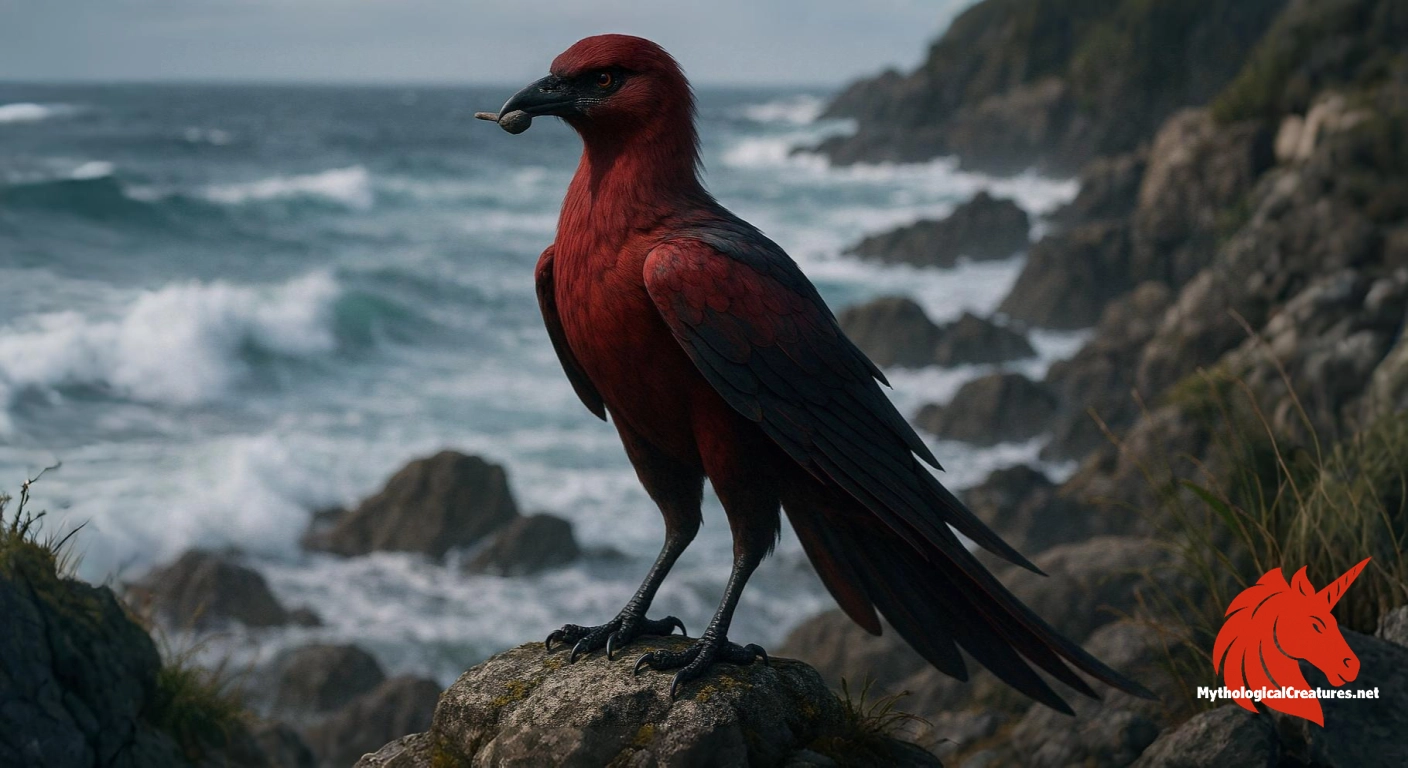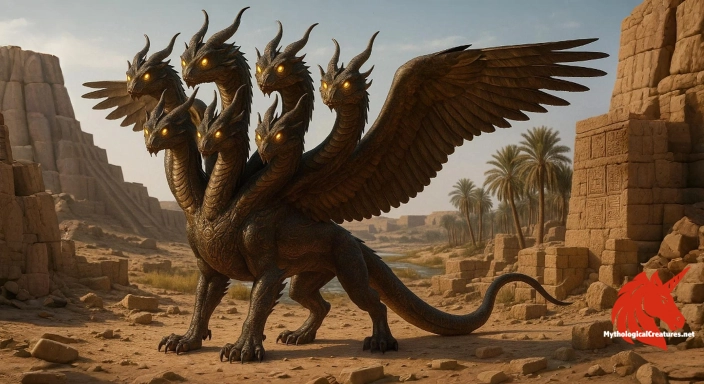Jingwei: Jingwei is a mythological bird goddess in Chinese mythology, renowned for her relentless determination to fill the Eastern Sea by carrying pebbles and twigs.

Jingwei
Jingwei - Jingwei’s myth serves as a timeless allegory for unyielding resilience and the ceaseless struggle against overwhelming odds.
Origins & First Encounters
Jingwei emerges from the depths of Chinese mythology as a striking embodiment of resilience and sorrow, an enduring symbol whose legacy transcends time and tragedy. Born from the misfortune of a young maiden who met her fate in the tumultuous Eastern Sea, she was transformed into a bird with a divine mission. Her metamorphosis from a mortal spirit into the celestial guardian known as Jingwei links her to the broader tapestry of Chinese legend, where destiny and divine retribution intersect. The narrative paints a vivid picture of a being who, despite the confines of grief, channels her loss into a ceaseless endeavour to reclaim order from chaos. Early records hint at her origins as intertwined with notable deities, imbuing her story with both familial connection and mythic significance. As a figure of both beauty and determination, her tale reinforces the power of perseverance in the face of unavoidable natural forces. The blend of tragedy and tenacity in her life resonates with audiences, offering an allegory of duty and hope. Her ancient story, woven into the fabric of cultural heritage, continues to inspire through its poignant contrast between vulnerability and indomitable spirit. The myth of Jingwei immortalises the idea that even from the deepest despair, a force of renewal can emerge. In revisiting her origins, one sees a multifaceted narrative that captures the essence of human endeavour against nature’s vast challenges.
Source Texts & Tale Variants
Traditional literature and ancient anthologies provide the primary foundations for Jingwei’s enduring myth, presenting a narrative that has captivated generations. Various classical texts offer differing versions of her transformation and subsequent mission, reflecting the evolving nature of myth through time. Early accounts, embedded in folklore and preserved in hand-copied manuscripts, recount her tragic demise in the Eastern Sea and her rebirth as an avian spirit with a purpose. Diverse regional traditions have enriched her legend by embellishing the details of her transformation, resulting in subtle variations that highlight different cultural emphases. Some versions of the myth stress her celestial origins by presenting her as a reincarnated deity, while others offer a more grounded portrayal as a mortal doomed to an immortal fate. The narrative, as recorded in ancient compendiums of myths and legends, reveals a complex interplay between fate, punishment, and persevering hope. This multiplicity of sources not only testifies to her widespread appeal, but also to the dynamic ways in which her saga was adapted to suit local contexts. Each variant of Jingwei’s story provides additional layers of meaning, underscoring themes of resilience and retribution. As these ancient texts and oral traditions continue to be rediscovered and reinterpreted, Jingwei’s myth remains a vibrant subject in the study of Chinese folklore. Her tale is a testament to the enduring power of myth to bridge the past and the present.
Form & Powers
Visually, Jingwei is depicted as a bird marked by a delicate yet determined aura, her form simultaneously graceful and charged with unyielding energy. Illustrations often merge ethereal beauty with authentic natural features, presenting her plumage in vibrant hues that evoke the colours of both the sky and the sea. Her slender body and expansive wings convey a sense of lightness and agility, yet each brushstroke seems to capture the weight of an eternal burden. Artists frequently emphasise her expressive eyes, which mirror both profound sorrow and fiery resolve. Traditional depictions include subtle indications of her divine transformation, such as patterns on her feathers that hint at celestial symbols. While some portray her as almost diminutive in size, other accounts bestow upon her a slightly more imposing presence, ensuring that no matter her scale, her determination is unmistakable. The physical attributes of Jingwei are rendered with an attention to detail that celebrates both the fragility of life and the strength of spirit. Her beak, ever busy with the task of carrying small pebbles or twigs, serves as a tangible emblem of her quest. Through these meticulous details, her visual identity becomes a compelling representation of the interplay between sorrow and valour. This rich, visual description has allowed Jingwei to remain a striking and memorable figure in the artistic traditions of Chinese mythology.
Regional Faces
The myth of Jingwei enjoys a rich diversity of expression across different regions, each locally adapting her tale to mirror communal values and environmental challenges. In coastal areas of Eastern China, she is frequently revered as a guardian spirit tasked with taming the tumultuous Eastern Sea, her relentless actions symbolising the local struggle against nature’s overwhelming power. Rural narratives often infuse her legend with a sense of maternal endurance, portraying her as a nurturer of hope who tirelessly contributes to restoring order in the face of chaos. Folk renditions tend to highlight the interplay between loss and redemption, emphasising a connection between the natural world and human determination. In certain communities, her transformation is intertwined with local deities and ancestral cults, thus enriching her character with additional layers of cultural significance. Regional storytelling has allowed for variations in her backstory, sometimes magnifying her human qualities and at other times stressing her divine attributes. Local festivals and art forms have drawn upon her myth as a symbol of resilience, anchoring her narrative in everyday experiences and collective memory. Each regional version contributes to a multifaceted understanding of Jingwei, reflecting both the uniqueness of local traditions and the universality of her mission. These adaptations underscore how myth can be a living narrative, capable of evolving to meet the needs and imaginations of different communities. Ultimately, Jingwei serves as a reminder that even the most ancient stories are subject to reinterpretation, each version adding colour and depth to her mythic persona.
Cultural Parallels
Across cultures, the story of Jingwei finds resonances with other myths that celebrate the triumph of determination over insurmountable natural forces. Similar to the eternal struggle depicted in the tale of Sisyphus in Greek mythology, her ceaseless quest to fill the sea reflects a recurring theme of defiance against the inevitable. Analogous legends in various traditions feature characters who take on monumental tasks, serving as a metaphor for human perseverance in the face of overwhelming odds. In some West African oral narratives, mythical birds play roles that mirror Jingwei’s duty to restore balance, underscoring a shared respect for the forces of nature. Such cross-cultural parallels highlight a universal human fascination with the concept of relentless commitment and the transformation of tragedy into hope. The recurrence of repetitive, heroic endeavours in disparate cultural contexts points to a common symbolic language in myth. While the specifics of her legend are uniquely Chinese, the broader themes of loss, rebirth, and resolute defiance resonate on a global scale. This comparative aspect enriches our understanding of myth as a means of addressing the human confrontation with nature’s vast, uncontrollable elements. Thus, Jingwei stands alongside other mythic figures as a powerful reminder that the struggle against fate is a timeless narrative that unites diverse cultures. Her enduring tale exemplifies how mythology can cross geographical boundaries to reflect universal truths about the human condition.
Legacy & Modern Evolution
The enduring myth of Jingwei has charted a dynamic journey from ancient lore to modern reinterpretations, continually adapting to reflect changing cultural concerns and artistic sensibilities. Originally, her narrative served as a poignant allegory for resilience, embodying the eternal struggle to overcome adversity through sheer determination. Over the centuries, her story has evolved in response to new societal contexts, with each generation interpreting her myth in light of contemporary challenges. Today, Jingwei is often invoked in modern literature and visual arts as a symbol of environmental stewardship and the human drive to combat seemingly insurmountable obstacles. Her legacy is celebrated in an array of cultural expressions, from traditional paintings to modern installations that breathe new life into her timeless message. Modern retellings frequently explore the psychological dimensions of her character, underscoring themes of loss, renewal, and reconciliation with nature. In academic and popular discourse alike, Jingwei's struggle is seen as a metaphor for the broader battle against ecological and existential crises. Her myth serves as a bridge between the ancient and the modern, encapsulating values that resonate across epochs. In festivals, multimedia projects, and literary works, her figure continues to inspire discussions on resilience and hope. Ultimately, the continuing evolution of Jingwei's story highlights not only her central role in Chinese mythology but also her universal appeal as an archetype of enduring determination.
Interesting Fact
Jingwei's persistent quest to fill the Eastern Sea has inspired countless works of art and literature, cementing her legacy as a symbol of indomitable spirit in Chinese culture.
Quick Creature Info
Features:
Associations:
Our Mythic Legendary Rating:

Also Sometimes Known As:
Habitat:
Supernatural Powers:
Physical Attributes:
Abilities:
Behavior:
Lore:
References
Discover Another Mythical Legend You May Not Have Heard Of?
Uncover the mysteries of ancient folklore and expand your knowledge of legendary beings from cultures around the world.
Dare to Meet the Mušmaḫḫū....
Mythical Disclaimer: The images and data on this site are derived from various historical and literary sources, but we have found that many myths often have multiple versions and interpretations across references, sometimes contradictory. As a result, these creature depictions are artistic interpretations—imaginative blends of folklore, legend, and a dash of AI guesswork. Because creature descriptions vary widely, our illustrations and accompanying information represent our best effort to honor mythology while bridging creative gaps. Enjoy these interpretations—just remember, we've done our best to respect the stories and validate available data, but in the realm of mythology, details often shift, imagination leads the way, and nothing is ever set in stone!
Curated by the Mythological Creatures Team (rev. May 2025)
